If there is one thing you must know when you travel throughout Italy, it’s this: you don’t eat “Italian food”, you eat “regional Italian food”. Of course in big cities, you’ll find slightly more variety, but if you head to the Italian countryside, expect to find traditional recipes that are specific to that region, and even sometimes specific to that town. In Italy you can easily find different “traditional regional recipes” made within a 5km radius, or sometimes they even have completely different names for the same dish. There are 20 regions in Italy, but today we will be talking about Emilia-Romagna, the so-called “food valley” :: “valle del cibo.”
Never heard of Emilia-Romagna? No worries, neither had I before moving here in 2009. Emilia-Romagna is the region directly north of Tuscany :: Toscana. Although, you may still need to look at the map, you’re probably already quite familiar with some of its most famous products: Parmigiano Reggiano cheese, Parma Prosciutto and Balsamic Vinegar from Modena.
 Emilia-Romagna isn’t nicknamed “the food valley” for no reason. Beyond the legendary products listed above, there are the celebrated recipes that you may have already tried, and if you haven’t, put them on your list:
Emilia-Romagna isn’t nicknamed “the food valley” for no reason. Beyond the legendary products listed above, there are the celebrated recipes that you may have already tried, and if you haven’t, put them on your list:
Spinach or Pumpkin Tortelli: Homemade pasta stuffed with spinach or pumpkin.
Spinach Tortelli :: Tortelli Verdi
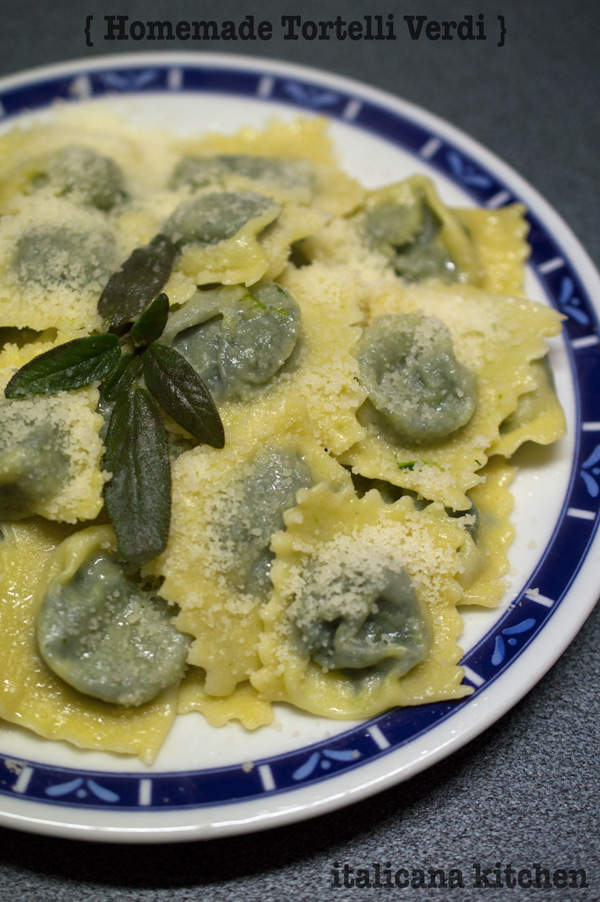 Pumpkin Tortelli :: Tortelli di Zucca
Pumpkin Tortelli :: Tortelli di Zucca
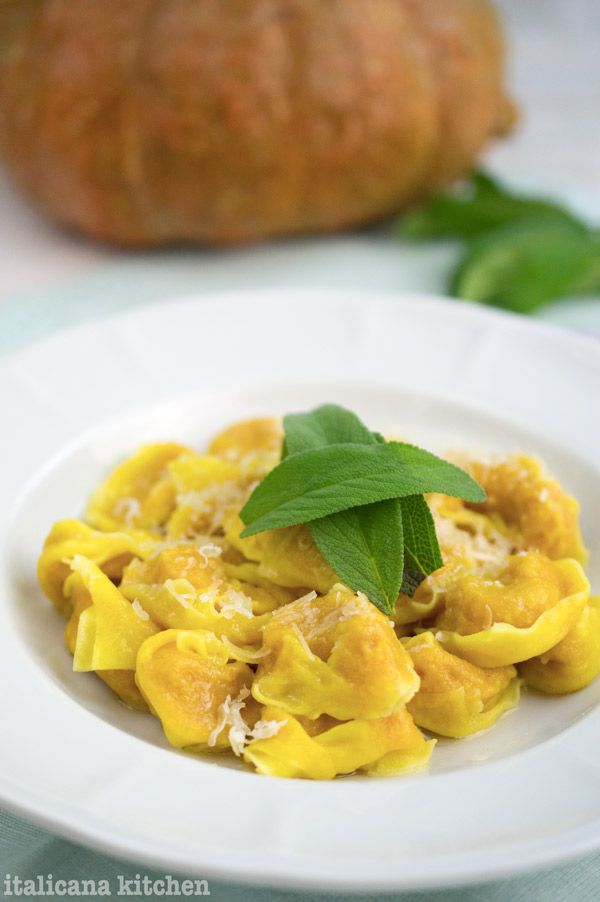
Erbazzone: A delicious savory pie made with swiss chard :: bietole and eaten for breakfast or as an appetizer.
Piadina: A soft flat bread, similar to a tortilla and typical of Romagna.
Tagliatelle: egg noodles usually accompanied by a meat sauce (ragù alla Bolognese) or a variety of vegetable sauces.
Homemade Kale and Truffle Whole Wheat Tagliatelle
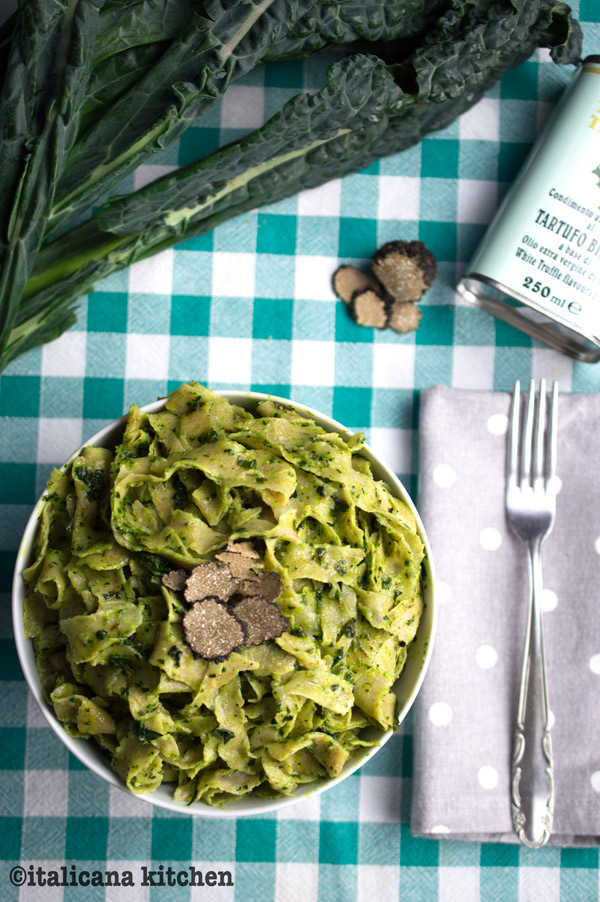
Tagliatelle with Asparagus and Peas
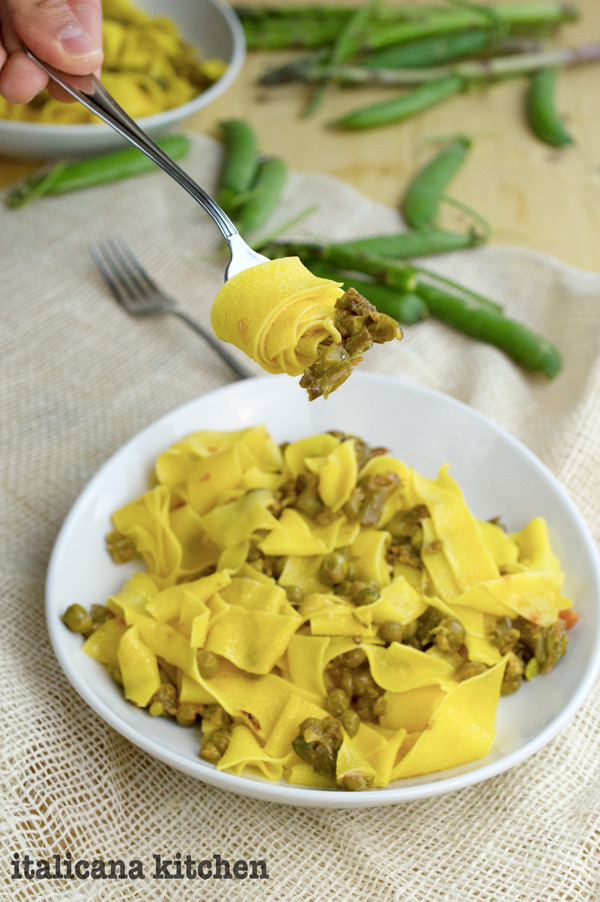
Oh, the list could go on…. The only way to really get a good idea of the food world in Emilia-Romagna is to come to the region and do 3 things:
1. Head to a trattoria, which is an informal restaurant (often family owned) where the prices are cheap and the recipes are traditional, like what you will find cooked in homes nearby.
2. Take tours of food producers like traditional balsamic vinegar or Parmigiano Reggiano.
3. Get your hands in the flour and take some Italian cooking courses :: corsi di cucina.
If you’re not able to catch the next flight for the “bella paese”, use this blog and other online sources to find recipes from Emilia-Romagna that you can make in your own home. The beauty of food is that your taste buds :: le papille gustative can travel without leaving home.
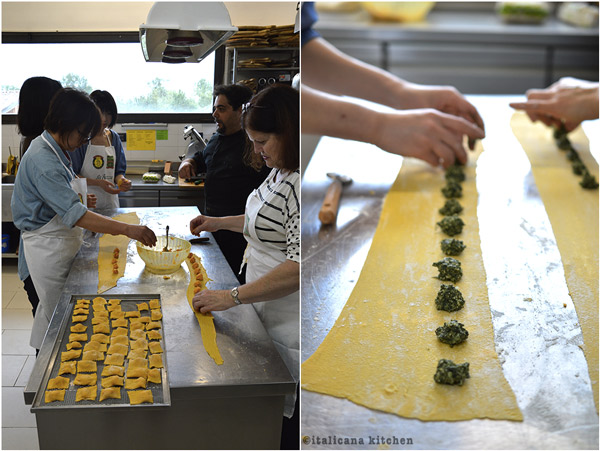 If you are able to make it here someday, and would like to enhance your knowledge on how Parmigiano Reggiano, Parma prosciutto, balsamic vinegar and traditional regional recipes are made, I suggest that you contact Reggio Lingua, a language school in Reggio Emilia that organizes Italian language classes, home stays, unique agriturismo accommodations, cooking classes and cultural activities like visits to cheese and balsamic vinegar factories or city tours.
If you are able to make it here someday, and would like to enhance your knowledge on how Parmigiano Reggiano, Parma prosciutto, balsamic vinegar and traditional regional recipes are made, I suggest that you contact Reggio Lingua, a language school in Reggio Emilia that organizes Italian language classes, home stays, unique agriturismo accommodations, cooking classes and cultural activities like visits to cheese and balsamic vinegar factories or city tours.
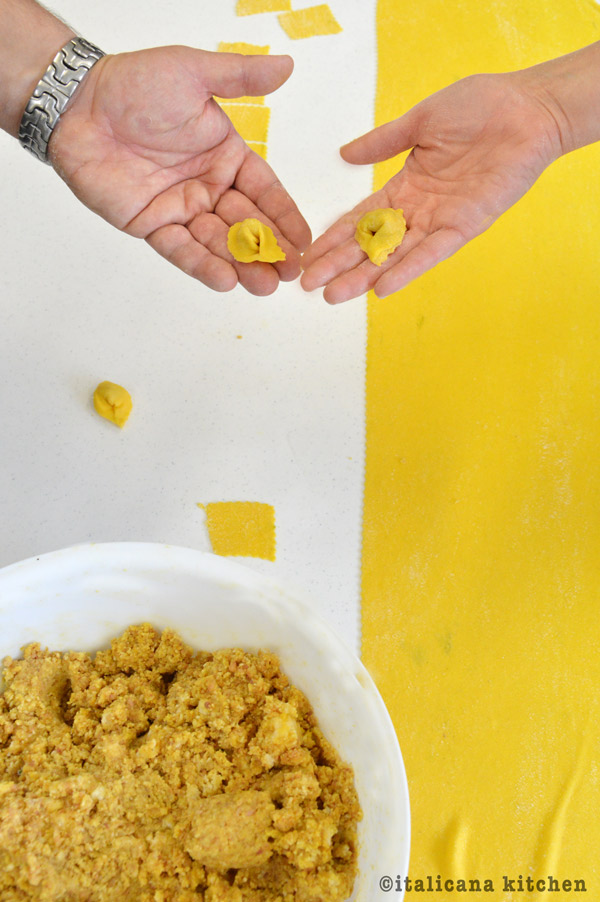
*This post is not sponsored by Reggio Lingua. I attended their Italian language classes for 3 years and highly recommend their language and cultural services.
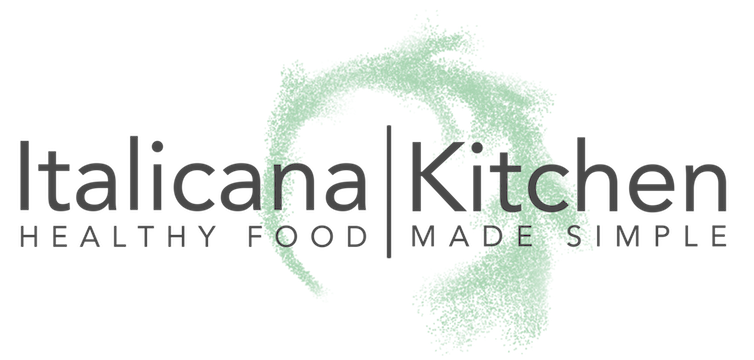

bellissimo post, grazie per averci deliziato con questi piatti cosi’ buoni e conosciuti anche fuori Italia!!!Baci Sabry
Grazie mille, Sabrina! In realtà questi piatti da Emilia-Romagna sono pochi conosciuti fuori d’italia. In America, non ho mai visto i tortelli, le piadine/tigelle o erbazzone nei ristoranti. Il cibo da Emilia-Romagna che sono più popolari sono: i cappelletti (chiamati tortellini negli USA), il ragù alla bolognese e le lasagne. (Ma certamente non fatti come qui in italia! Di solito le persone a casa usano la pasta secca apposta per le lasagne che compri al supermercato.) Comunque, farò il mio meglio di informare ai miei lettori stranieri di tutta la bontà che si trova qui in italia che non è molto conosciuto all’estero. 🙂 Baci!